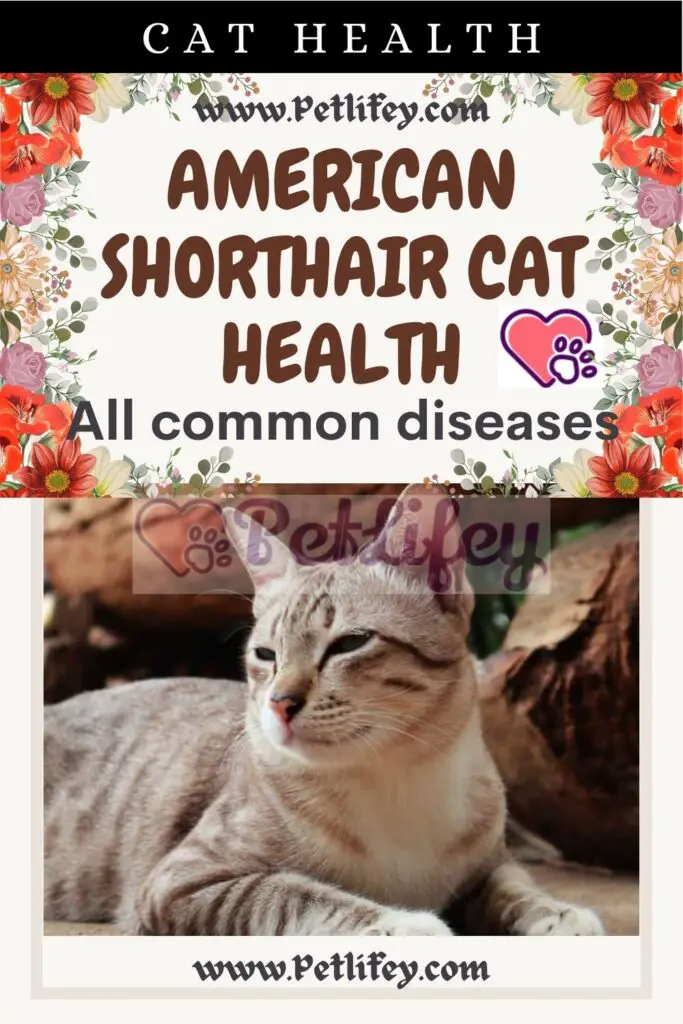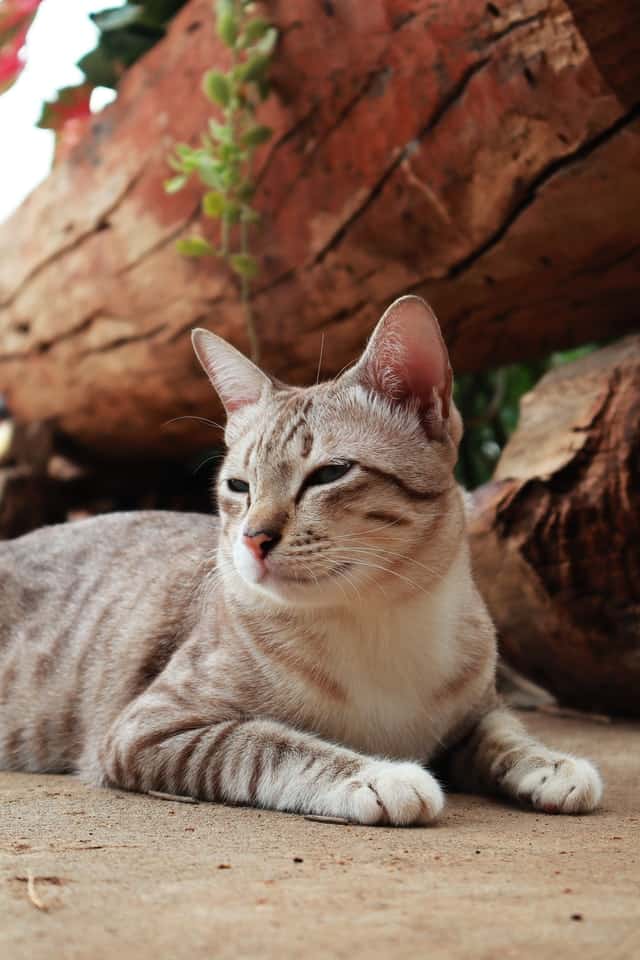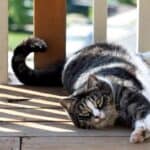The diseases of the American Shorthair, the most common health problems in this cat breed. Let’s find out what they can be.

When you choose to adopt an animal regardless of whether it may be a cat or a dog, it is advisable, if useful, to inquire about any health problems of the animal.
All the pathologies that can affect a particular breed and all the possible problems that can occur as emergencies.
In this article we are going to find out about the diseases of the American Shorthair and everything that can occur regarding the health of this breed.
So if you have decided to adopt an American Shorthair do not miss the next paragraphs, they will be useful for you.
Common Diseases in the American Shorthair

The American Shorthair is a rustic looking medium to large sized cat a bit stocky but in any case agile and muscular.
The American Shorthair is a descendant of the European cat, it is said that the first American colonists used this cat on ships to hunt mice and this was how this cat landed overseas.
The American Shorthair is a cat that if well cared for can live safely up to 15 years of age and although it may be a rather resistant, robust and proportionate breed, it is still subject to certain pathologies.
Therefore, it is essential to know, in addition to how to take care of the American Shorthair, a topic that you can explore in this article, such as the diseases of the American Shorthair that can most occur in this particular breed.
The American Shorthair as we have previously mentioned is a very robust and resistant breed of cat and although it does not need excessive care it is still subject to certain pathologies.
The most common diseases of the American Shorthair can be the following:
- Obesity and Diabetes : It might seem rather strange to talk about obesity in a cat like the American Shorthair, being a very active animal, also described as an excellent climber and jumper. However, despite its muscular but agile body, this cat, if it does not follow a suitable diet (possibly made of dry food), if its weight is not carefully controlled, can easily find itself in a critical situation regarding obesity and consequently also diabetes in cats. In addition, this breed needs daily exercise. It is therefore essential to provide the animal with various games that allow it to do physical activity, scratching posts and high shelves to climb. And if we want to combine business with pleasure, we can get the cat used to the leash and harness, to be able to walk together without incurring the danger that it can move away and endanger it;
- Neonatal Isoerythrolysis : The American Shorthair is at risk for neonatal isoerythrolysis as its specimens, unlike other breeds, may have type B or AB blood types. Neonatal isoerythrolysis is an immune-mediated disease that can cause the death of healthy puppies, particularly when the mother of group B breastfeeds group A puppies, causing a strong incompatibility reaction. The kitten, taking the mother’s milk, develops a series of antibodies that attack and destroy its red blood cells and within a few days, the kitten’s death occurs.
- Polycystic kidney in cats: this disorder consists of small cysts on the tissues of the kidney and sometimes also of the liver of the American Shorthair that tend to enlarge, more towards the 7 years of age of the cat. This disorder is genetic already at birth and can compromise the functionality of the affected organ. You can pinpoint the problem by looking at symptoms such as weight loss, vomiting, and excessive thirst. What can be done to help your pet can slow down the course of the disease by providing the cat with an adequate diet and specific drug therapy. In these cases, early diagnosis is what can extend the life of your four-legged friend. This will allow to prolong the functioning of the kidneys as much as possible.
- Hyperthyroidism: The thyroid has the function of producing a hormone that regulates the metabolism, called thyroxine or T4 and is located in the front of the throat. And what happens? It happens that there are many cats, especially the elderly ones who develop a benign thyroid tumor. This generates cancer cells which continue to produce excessively T4, thus causing an imbalance. The disease makes the cat extremely active and this makes it even more difficult to establish only by observing your pet that it has some health problems. However, if it has symptoms such as: vomiting, weight loss and excessive thirst it can be traced back to it. In severe cases that are already in an advanced stage, heart and kidney problems can occur, as well as blood clots that can be fatal. In order to make a correct diagnosis it will be possible to carry out specific tests on the cat and thus identify the disorder. It will then be the veterinarian’s task to surgically intervene and remove the tumor to restore normality to the cat;
- hypertrophic cardiomyopathy (HCM ): an inherited disease, which causes enlargement of the heart. To make the diagnosis, the vet will listen to the heart. From listening to it, the doctor will evaluate the presence of a heart murmur and perform an echocardiogram to confirm the suspicion. Therapy will consist of a suitable diet and adequate medications. Particular attention must be paid to reproduction, making sure that cats with this incurable disease are not used.
Other diseases
These mentioned below are the main diseases that can affect any cat including the American Shorthair.
- Toxoplasmosis: This is an infectious disease caused by the parasite Toxoplasma gondii, which finds its final host in the feline where it can reproduce;
- Allergies: The cat can suffer from allergies of various origins. Therefore, if the cat scratches itself, sometimes even to the point of scratching itself, or licks itself persistently, it could be an allergic subject.
- Mycosis: It is a disease caused by fungi. It is transmitted by direct contact and the cat may not show symptoms but be a healthy carrier. It causes redness, scabs and other symptoms that lead to scratching constantly, with the risk of spreading the infection to other parts of the body.
- Conjunctivitis: It is the inflammation of the mucous membranes of the eye to which the cat is very subject;
- Periodontitis : A disease of the cat’s mouth, particularly in the elderly and if not treated in time it can be fatal;
- Otitis in cats: It is the inflammation of the epithelium that covers the ear canal of the auricle. It occurs mainly in people with low immune defences;
- Poisoning: Cat poisoning is a probable accident that is also quite serious that can occur and for which action must be taken quickly, in order to save the animal;
- Mange : It is also called scabies and is caused by a mite of which there are different species and subspecies that behave in different ways. It is transmissible to other animals and to humans, there are different types and has symptoms similar to eczema: itching, scabs, patchy hair loss;
- Abscess : It is an infection that occurs when there are deep wounds on the cat’s body. We can observe them on the legs, behind the tail or on the muzzle of the animal;
- FeLV : It is known as feline leukemia, it is a disease caused by a virus of the Retrovirus family, among which there is also the one responsible for FIV itself, which affects the bone marrow. Transmission occurs through the exchange of blood and saliva, even if not direct. Fortunately, vaccination exists to prevent the problem in domestic cats;
- FIV: FIV is similar to human HIV, it is a feline immunodeficiency syndrome that becomes infected through saliva and blood. Unlike FeLV there is no vaccine but if taken in time, it can extend the life of the cat for a long time.






